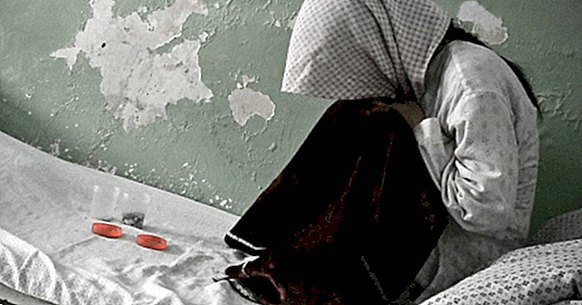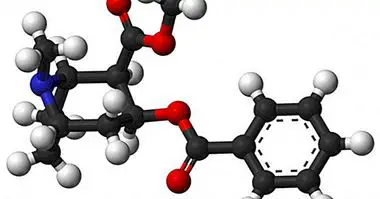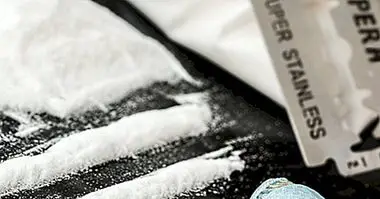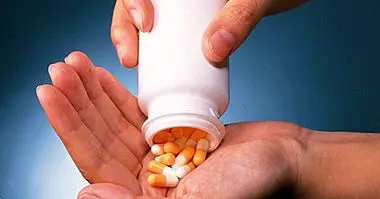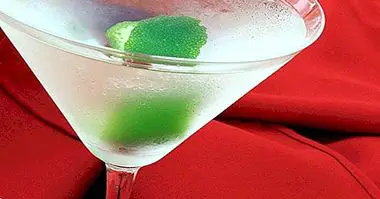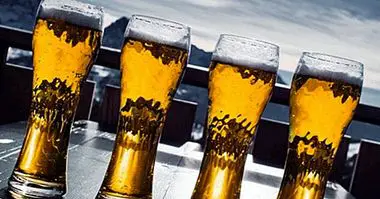Craving: causes and symptoms of the desire for substance use
The consumption of psychoactive substances If it is done more or less frequently, it ends up causing the body to generate tolerance to said substance. This means that in order to achieve the same effects as at the beginning, the administered dose must be gradually increased, or the consumption must be spaced out in order for the organism to become accustomed to working without it.
If the organism stops consuming or is maintained with doses that no longer take effect, some kind of withdrawal syndrome that causes a level of discomfort and variable suffering, appearing an intense desire to consume the substance in question. It's about craving .
- Related article: "Types of drugs: know their characteristics and effects"
What is craving?
We understand how craving the feeling of urgent and urgent need to perform a certain activity, whose absence generates anxiety . In the case of drugs, it refers to the intense desire to obtain and consume the substance in question that generates it. This desire does not have to find a behavioral correlate, that is, it does not have to cause an action that leads to consumption.
This desire is given in subjects who have or have had dependence on a certain substance , forming an important part in the maintenance of the addictive process. It can be activated by the presence of stimuli previously associated with the consumption of the substance, by stressful events and even by the absence of sufficient stimulation.
The craving may appear even in individuals who have stopped using . Usually it can be present actively until two years later, although it is usually much more intense in the period between the month and the first year of the end of consumption. This without taking into account the existence of falls and relapses.
- Related article: "Delirium tremens: a severe alcohol withdrawal syndrome"
Causes and contexts of appearance
The craving for drug use usually associated with the need caused by the abstinence of this , but that reason is only one of those that exist. Some of the main moments in which craving appears are the following.
1. Withdrawal syndrome
Abstinence to a substance to which the body and mind have become accustomed can be very hard.
If the withdrawal of consumption occurs abruptly Too fast or inadequate, it is common to see various symptoms of variable danger. Even if this is given in a patterned and correct way, the decrease in consumption or not increasing in order to feel the effects can cause discomfort, frustration, anxiety and even aggressiveness and under control to the subject. And even if the subject does not try to disengage, the progressive increase in the body's tolerance towards the drug provokes the need for ever-increasing consumption, generating discomfort when it is not achieved.
In all these circumstances it is frequent that craving appears, with the purpose of avoiding or diminishing the discomfort associated with non-consumption.
- Maybe you're interested: "Addiction: disease or learning disorder?"
2. Conditioning stimulate
The use of drugs usually occurs in a specific context. Places, activities and even people are over time associated with the fact of consuming .
This causes that in the long term to come into contact with certain types of stimuli provokes an elicitation of the consumption response, appearing the craving before said stimuli, people or situations.
3. Pleasure seeking / displeasure avoidance
Many drug users begin to consume because it generates pleasant sensations or escape from problems concrete. Even if there is no physiological need as in the case of abstinence, a strong desire for consumption may appear in situations of life suffering, depression or simple boredom. Sometimes it also appears as a way to try to enhance a rewarding experience, as with sex or food.
Possible explanations of the craving for consumption
The causes of this phenomenon have been explored and studied by numerous authors and currents of thought. Some of the possible explanations offered are the following.
Neuropsychological explanation
At the neurobiological level, craving seems to be caused by the adaptation of the nervous system to the substance. The dependent subject who stops consuming keeps altered different brain mechanisms such as the brain reward system and the transmission of hormones such as dopamine, serotonin and endorphins .
When the consumption ceases or is not produced enough, the organism is altered by the absence of family elements. This causes an intense discomfort that is associated with the substance that is missing , with what appears the persistent desire to consume it. With the passage of time, if there is no consumption the brain returns to a normal state, so the need will not be so high.
- Related article: "Types of hormones and their functions in the human body"
Explanation according to conditioning
Another explanation can be found in the conditioning.
On the one hand we can observe typical components of classical conditioning, which in this case would cause a link between consumption and environmental elements, so that the presence of these elements will evoke consumption. Thus, a desire for repeat the experience before the stimulation linked to it .
On the other, from operant conditioning, it can be established that the positive consequences of consumption and its persistent experimentation act as a reinforcement to one's own consumption while generating the expectation of continuously obtaining the same reward and in the same intensity. In the absence of it, the response to repeat the consumption is generated in order to achieve the same effects.
The cognitive perspective of craving
A more cognitive vision refers to the craving is mediated by the expectations and beliefs of self-efficacy of the person , being a main element to explain the processing of information.
One of the most popular cognitive-behavioral models in the explanation of craving is the model of double affection , which points out that craving comes from a part of the aversive emotional state that causes the withdrawal syndrome or unpleasant events and from the positive emotional state generated by the consumption of the substance. The events and stimuli of the environment generate the activation of the network of responses and cognitions that are linked to the appetitive effects of the drug and the aversives of its absence.
Another possible explanation is found in the cognitive processing model , which stipulates that in drug addicts the habit of consuming has been automated, requiring no effort to be consumed. From this perspective, craving is a non-automatic process caused by the effort not to consume.
Craving in the treatment of addictions
Treat dependence to a substance it is a difficult and prolonged process over time , in which very diverse factors can influence such as the type of treatment applied, the experiences of the individual during the period of time in which it is carried out or the perceived social support.
In this process, abstinence will cause deep suffering in the person under treatment , suffering that will generate in a very powerful way the desire or desire to consume again: the craving.
Craving is one of the main causes of fall (consume once but without necessarily reinstating the habit) and relapse (which recovers the habit of consumption), which must be especially taken into account when establishing treatment programs. It is because of that It is essential to develop relapse prevention programs during any treatment.
In order to prevent it, it is necessary in the first place inform and educate the patient in that the desire for consumption in normal and that the fact that craving appears does not mean that consumption will occur.
It is also useful to take into account the type of stimuli that facilitate consumption or provoke the desire to do so, in order to avoid them or learn to face them in an adaptive manner without resorting to consumption. Strengthen and empower the patient , as well as restoring his sense of control and giving him tools and strategies that help him manage stress and resist desire, is another useful strategy to apply.
Bibliographic references:
- Iraurgi, J. and Corcuera, N. (2008). Craving: concept, measurement and therapy. North of Mental Health, 32; 9-22. Basque Country.
- River, P. (1987). The motivation of drug use: a psichobiological analysis of urges. The Nebraska Symposium on Motivation: alcohol use and abuse. Lincoln: University of Nebraska Press.
- Sánchez, E .; Molina, N .; from El Olmo, R .; Tomás V. and Morales, E. (2001). Craving and drug addiction. Addictive disorders, vol. 3; 4; 237-243.
- Tiffany, S. (1990). A cognitive model of drug urges and drug abuse behavior: role of automatic and non automatic processes. Psychol Rev, 84, 127-90.

